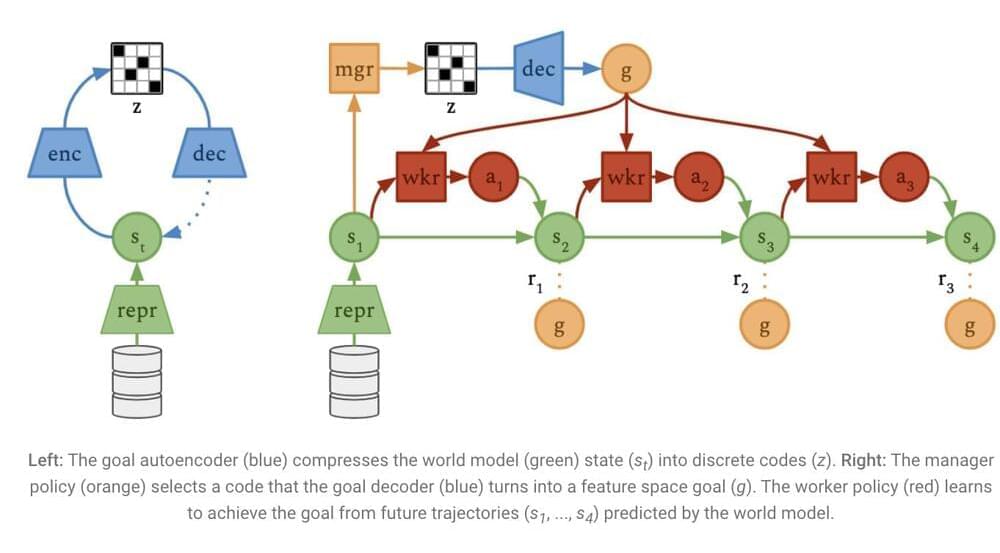A new report says that Microsoft is moving to a three-year cadence for new versions of Windows, which would schedule Windows 12 to release on 2024 and set the stage for new Windows 11 features to release multiple times per year.






The question was whether something similar would hold in three dimensions. At his lab, Datta investigates such questions using glass beads that mimic see-through soil or sediment. “There’s this quote from the great American philosopher and baseball player, Yogi Berra: ‘You can observe a lot by just watching,’” he said. “I think that’s my entire research program in a nutshell.”
Datta and his co-investigator Christopher Browne introduced their own fluorescent microparticles into polymer-containing fluids, then filmed the movement of the complex fluids through their setup. As the flow rate increased, the liquid began to tumble and loop back on itself, first in a pore or two, then in several more, and eventually in all the pores. The researchers knew that this had to be elastic turbulence because the influence of inertia in these substances was extremely low, at least a million times below the typical threshold for inertial turbulence’s appearance. Their findings appeared on November 5 in Science Advances.
Datta is most excited about potentially harnessing elastic turbulence to clean dirty groundwater. Researchers have tried to clear up polluted underground aquifers by pumping a polymer-containing fluid into them, which should force the water through underground rocks that trap the contaminants. The new work could help researchers formulate the fluids to better accomplish such a task, Datta said.

Lockheed Martin has been busy this year. In April of 2022, the Defense Advanced Research Projects Agency (DARPA) and its U.S. Air Force partner announced that they had completed a free flight test of the Lockheed Martin version of the Hypersonic Air-breathing Weapon Concept (HAWC).
Then just last month, the U.S. Department of Defense (DoD) awarded the company a contract to construct the nation’s first megawatt-scale long-duration energy storage system. Under the direction of the U.S. Army Engineer Research and Development Center’s (ERDC) Construction Engineering Research Laboratory (CERL), the new system, called “GridStar Flow,” will be set up at Fort Carson, Colorado.
In the same time frame, General Motors and the firm announced their plans to produce a series of electric moon rovers for future commercial space missions. The companies said they plan aim to test the batteries developed by GM, in space later this year. They also set the ambitious goal of testing a prototype vehicle on the moon by 2025.

A machine-learning algorithm that includes a quantum circuit generates realistic handwritten digits and performs better than its classical counterpart.
Machine learning allows computers to recognize complex patterns such as faces and also to create new and realistic-looking examples of such patterns. Working toward improving these techniques, researchers have now given the first clear demonstration of a quantum algorithm performing well when generating these realistic examples, in this case, creating authentic-looking handwritten digits [1]. The researchers see the result as an important step toward building quantum devices able to go beyond the capabilities of classical machine learning.
The most common use of neural networks is classification—recognizing handwritten letters, for example. But researchers increasingly aim to use algorithms on more creative tasks such as generating new and realistic artworks, pieces of music, or human faces. These so-called generative neural networks can also be used in automated editing of photos—to remove unwanted details, such as rain.

AI & Machine Learning (ML) Course Online — BlackBelt Plus Program
Certified AI & ML BlackBelt Plus Program is the best data science course online to become a globally recognized data scientist. BlackBelt Plus Program includes 105+ detailed (1:1) mentorship sessions, 36 + assignments, 50+ projects, learning 17 Data Science tools including Python, Pytorch, Tableau, Scikit Learn, Power BI, Numpy, Spark, Dask, Feature Tools, Keras, Matplotlib, Rasa, Pandas, ML Box, Scikits-Image, Amazon SageMaker, Streamlit, AWS, Flask, and other technologies such as Computer Vision, Natural Language Processing, Machine Learning, Artificial Intelligence and Deep Learning.

By Planning in the Latent Space of a Learned World Model. The world model Director builds from pixels allows effective planning in a latent space. To anticipate future model states given future actions, the world model first maps pictures to model states. Director optimizes two policies based on the model states’ anticipated trajectories: Every predetermined number of steps, the management selects a new objective, and the employee learns to accomplish the goals using simple activities. The direction would have a difficult control challenge if they had to choose plans directly in the high-dimensional continuous representation space of the world model. To reduce the size of the discrete codes created by the model states, they instead learn a goal autoencoder. The goal autoencoder then transforms the discrete codes into model states and passes them as goals to the worker after the manager has chosen them.
Deep reinforcement learning advancements have accelerated the study of decision-making in artificial agents. Artificial agents may actively affect their environment by moving a robot arm based on camera inputs or clicking a button in a web browser, in contrast to generative ML models like GPT-3 and Imagen. Although artificial intelligence has the potential to aid humans more and more, existing approaches are limited by the necessity for precise feedback in the form of often given rewards to acquire effective techniques. For instance, even robust computers like AlphaGo are restricted to a certain number of moves before earning their next reward while having access to massive computing resources.
Contrarily, complex activities like preparing a meal necessitate decision-making at all levels, from menu planning to following directions to the shop to buy supplies to properly executing the fine motor skills required at each stage along the way based on high-dimensional sensory inputs. Artificial agents can complete tasks more independently with scarce incentives thanks to hierarchical reinforcement learning (HRL), which automatically breaks down complicated tasks into achievable subgoals. Research on HRL has, however, been difficult because there is no universal answer, and existing approaches rely on manually defined target spaces or subtasks.